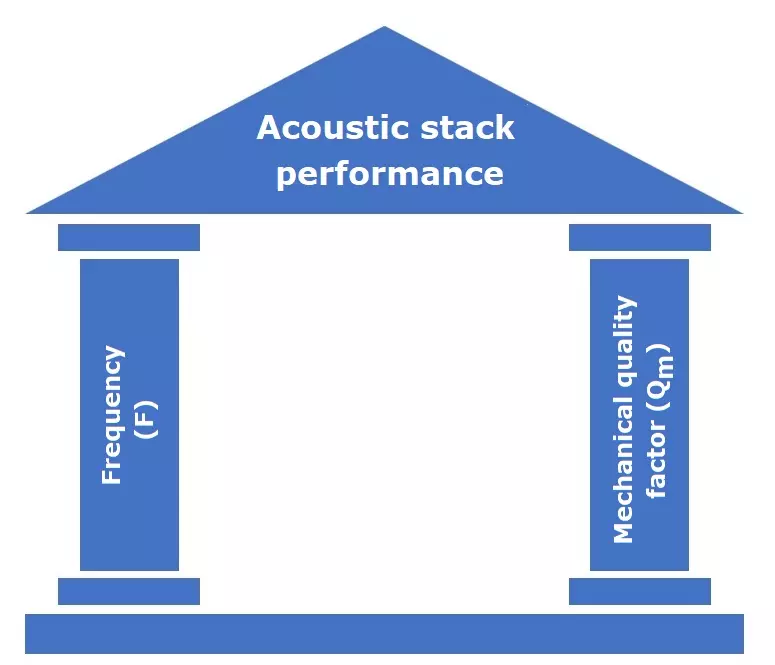FAQ: Being at the right frequency is enough for an acoustic stack to work well? Mr. B.S.

The acoustic stack performance pillars are the frequency and the mechanical quality factor Qm.
Tuning an acoustic stack at the correct frequency is necessary, but only tuning is not enough for an acoustic stack to operate properly. Besides the frequency tuning, you must also have a high Qm and operate efficiently without overheating. The amplitude of vibration is also directly proportional to the mechanical quality factor (Qm). The acoustic stack performance pillars are the frequency and the mechanical quality factor Qm, as illustrated in the image.
Each stack’s ultrasonic part (converter, booster and horn) is similar to a band pass filter with its typical frequency and Q factor. If you combine a 20.5 kHz filter with a 19.5 kHz, the average frequency will be 20 kHz, but the quality factor very low because of the frequency mismatch, regardless of how good the parts are individually. When you combine an ultrasonic horn with high frequency and a converter with low frequency, you may have the stack at the right frequency because of the average, but the Qm and, consequently the performance and amplitude, will inevitably be low.
In addition, factors such as cracks, poor coupling between parts of the stack, inadequate material and temperature increase can affect the performance of the stack and consequently the Qm.
Learn more about testing converters and acoustic stacks.
Learn more about Stack preventive maintenance.
